




Have you noticed sluggish wasps in your house lately? If so, there might be a few reasons for their presence. While wasps are typically known for their aggressive behavior, sluggish wasps can be a cause for concern as well. In this article, we will explore the possible reasons behind the presence of these slow-moving insects in your home.
1. Infestation: One possible reason for the presence of sluggish wasps in your house is an infestation. Wasps, like many other insects, are attracted to food sources and shelter. They may have found a comfortable spot in your home, such as a crack in the wall or a warm corner, where they can build their nest and reproduce.
2. Old age: Another reason for the sluggishness of wasps could be their age. Like any living creature, wasps age and their physical abilities may decline. Older wasps may not be as quick or agile as their younger counterparts, which can make them appear sluggish.
3. Hibernation: Wasps hibernate during the winter months, and it is not uncommon for a few individuals to find their way into your home in search of a warm place to rest. These hibernating wasps may not move around much and can often be found in quiet corners or tucked away in unused rooms.
In conclusion, the presence of sluggish wasps in your house can be caused by various factors, including infestation, old age, and hibernation. If you are concerned about the presence of these insects in your home, it is recommended to contact a professional pest control service to address the issue and ensure the safety of your household.
Signs of Sluggish Wasps in Your House
1. Reduced Activity
If you notice a decrease in the overall activity of wasps in your house, it could be a sign that they are becoming sluggish. Wasps are typically active and busy, constantly moving around as they search for food and build their nests. However, if you start to see fewer wasps or notice that they are moving slower than usual, it may indicate that they are not in their normal energetic state.
2. Deterioration in Nest Quality
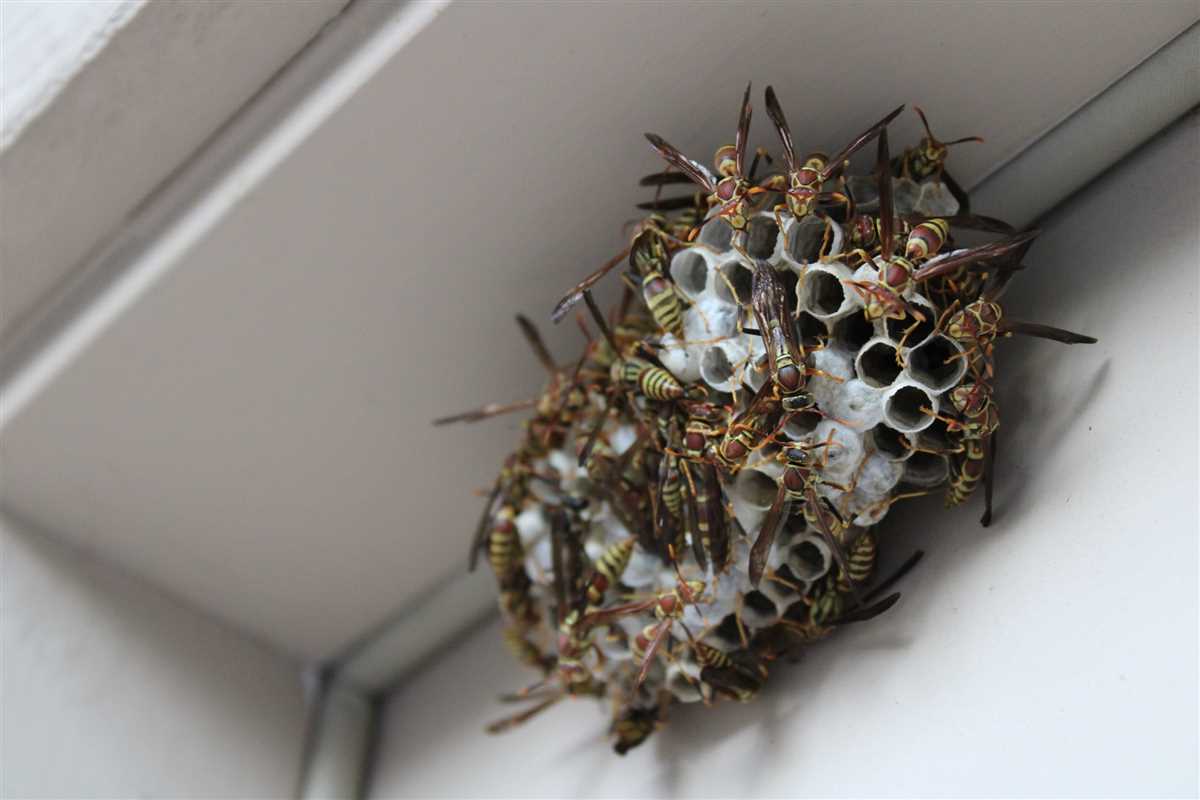
Another sign of sluggish wasps in your house is a deterioration in the quality of their nests. Wasps take great care in building and maintaining their nests, which are usually made of wood fibers and saliva. However, if you observe nests that are in disrepair or falling apart, it suggests that the wasps are not actively working on them or are unable to do so.
3. Inactive Larvae
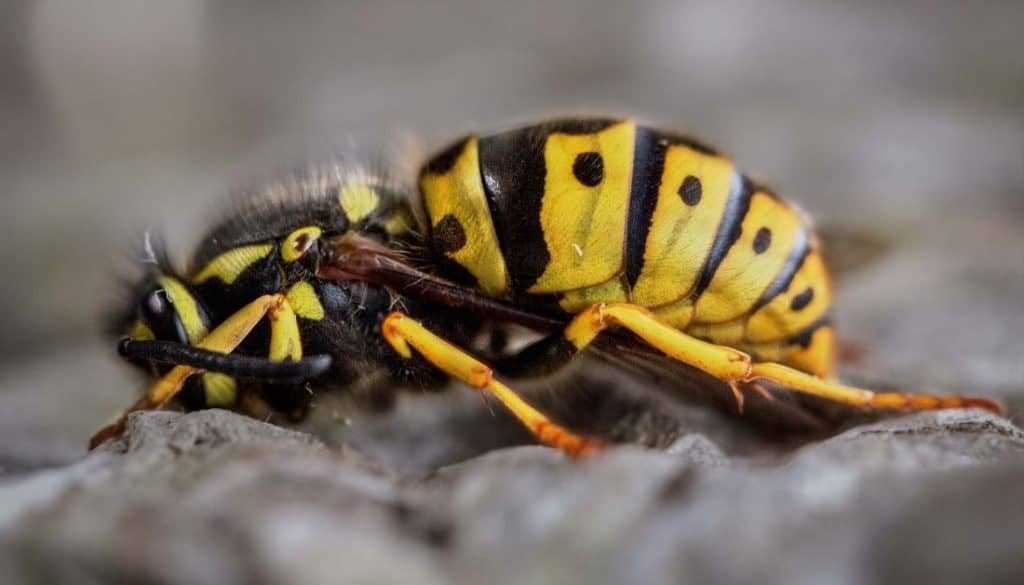
Wasps lay eggs in their nests, and the larvae are typically quite active. However, if you notice that the larvae in the nest are not moving or appear sluggish, it could be a sign that the colony is not thriving. This could be due to various factors such as lack of food or an unhealthy environment.
4. Presence of Dead Wasps
Finding dead wasps in your house is a clear indication that something is not right with the colony. While it is natural for some wasps to die over time, an excessive number of dead wasps is a cause for concern. These dead wasps may be the result of disease, lack of food, or other factors affecting the health of the colony.
5. Lack of Foraging
Wasps are known for their constant search for food, particularly sweet substances. If you notice a lack of wasps foraging around your house, it could be a sign that they are not finding enough food to sustain themselves. This can lead to sluggishness and a decline in the overall population of wasps in your house.
6. Increased Aggression
While not always the case, sluggish wasps may become more aggressive as they struggle to survive. If you have noticed an increase in wasp aggression, such as more frequent stinging or territorial behavior, it could be a sign that the wasps are under stress and are trying to protect their weakened colony.
7. Poor Overall Health
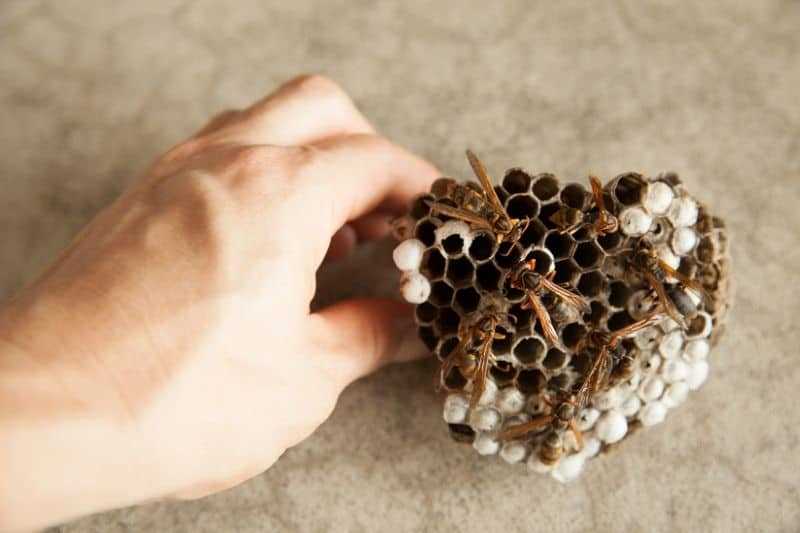
If you observe wasps that appear to be sickly or have visible signs of poor health, such as deformed wings or discoloration, it is a clear indication that they are not in optimal condition. Poor overall health can contribute to sluggishness and a decline in the population of wasps in your house.
It is important to address the presence of sluggish wasps in your house as it may indicate underlying issues that need to be resolved. Taking action to eliminate the factors causing the sluggishness can help maintain a healthy and balanced environment.
Unusual Wasp Behavior
When it comes to wasps, their behavior can vary depending on the circumstances. While wasps are known for their buzzing flight, aggressive nature, and ability to sting, there are also instances of unusual wasp behavior that can be observed. These behaviors may indicate certain factors or conditions that are affecting the wasps and their colony.
Lethargic Wasps
One unusual behavior that may be observed is the presence of lethargic or sluggish wasps. Instead of their usual active and alert state, these wasps may appear slow-moving and unresponsive. There can be several reasons for this unusual behavior:
- Weather conditions: Wasps are cold-blooded insects, and extreme temperatures can affect their activity levels. Hot temperatures can cause wasps to be less active and sluggish, while cold temperatures may cause them to become lethargic or even dormant.
- Poisoning or illness: Wasps can be affected by pesticides, insecticides, or other toxic substances. Ingesting or coming into contact with these chemicals can lead to lethargy and abnormal behavior. Additionally, certain diseases or infections can also cause wasps to become weak and sluggish.
- Old age or natural lifecycle: Like many other insects, wasps have a natural lifecycle that involves aging. As wasps get older, they may become less active and eventually die. Lethargy can be a sign of old age or the end of a wasp’s lifecycle.
Unusual Nest Building
Another unusual behavior that can be observed in wasps is unusual nest building. Wasps typically build intricate nests to house their colonies, but there may be instances where their nest-building behavior deviates from the norm:
- Unusual nest locations: Wasps may choose to build their nests in unusual or unexpected locations, such as inside houses, garages, or other human-made structures. This behavior can be caused by factors such as scarcity of natural nesting sites or environmental disturbances.
- Unusual nest structures: While wasps generally build their nests with a characteristic papery material, there may be instances where they use alternative materials or constructs their nests in unconventional shapes. This behavior can be influenced by factors such as the availability of nesting materials or inter-species competition for nest sites.
- abandoned nests: Wasps may also exhibit unusual behavior by reusing or repurposing abandoned nests from other insect species. This behavior may occur when suitable nest sites are limited, or when there is a need for additional nesting space but limited time or resources to construct new nests.
Conclusion
While unusual wasp behavior may be intriguing to observe, it is important to remember that wasps are still potentially dangerous insects. If you encounter a wasp colony displaying unusual behavior, it is best to exercise caution and consult with pest control professionals to address the situation safely and effectively.
Identifying Wasp Nests
Identifying a wasp nest is an important step in dealing with a wasp infestation in your home. By locating the nest, you can better understand the behaviour and habits of the wasps and take appropriate actions for removal and prevention.
Visual Identification
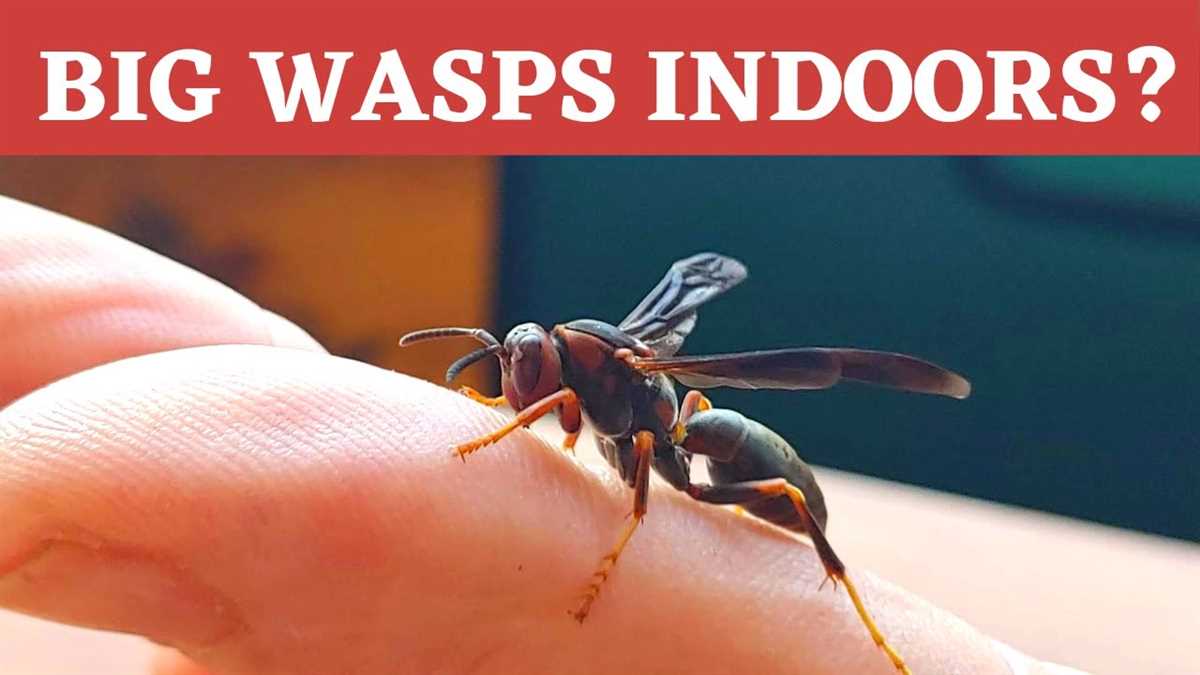
One way to identify a wasp nest is through visual cues. Wasps usually build their nests in sheltered locations such as under eaves, in tree hollows, or in wall voids. Look for areas where wasps are frequently seen coming and going.
Wasp nests can vary in appearance depending on the species. Common types of wasp nests include:
- Paper Wasp Nests: These nests are typically made from chewed wood fibers and saliva, resulting in a papery appearance.
- Mud Dauber Nests: Mud daubers construct nests from mud or clay, creating tubular structures that are often found attached to walls or under eaves.
- Ground Nests: Some wasp species build their nests in the ground, creating small burrows or mounds of dirt.
Keep in mind that wasp nests can vary in size and shape, so it’s important to familiarize yourself with the common characteristics of nests associated with local wasp species.
Activity and Noise
Another way to identify a wasp nest is by observing the activity and noise near the nest site. Wasps are generally more active during the day, so look for increased wasp presence during daylight hours. Additionally, you may hear buzzing or scratching sounds coming from the nest.
Professional Assistance
If you’re having difficulty identifying a wasp nest or suspect a large infestation, it’s recommended to seek professional assistance. Pest control experts have the knowledge and experience to safely locate and remove wasp nests, ensuring the safety of you and your home.
Possible Attraction Factors
- Food sources: Sluggish wasps can be attracted to your house if there are easily accessible food sources nearby. This can include uncovered garbage cans, open compost bins, or fruit trees in the vicinity.
- Sweet-smelling substances: Wasps are attracted to sweet smells, so if you have fragrant flowers or plants near your house, they may be attracting the sluggish wasps.
- Water sources: Like many other insects, wasps need water to survive. If you have standing water or leaky pipes in or around your house, it may be attracting the sluggish wasps.
- Warm and sheltered spots: Wasps are also attracted to warm and sheltered spots. If your house offers these conditions, such as cracks and crevices or holes in the walls, the sluggish wasps may be seeking refuge there.
- Nesting sites: Sluggish wasps may also be attracted to your house if there are existing wasp nests nearby. They may be looking for new nesting sites or simply attracted to the pheromones left behind by other wasps.
- Other insects: Sluggish wasps feed on other insects, so if you have a high population of insects in and around your house, it may be attracting the sluggish wasps.
By addressing these possible attraction factors, you can reduce the presence of sluggish wasps in your house. It is important to take appropriate steps to eliminate or manage these factors in order to prevent further infestation.
Potential Risks
- Allergies: Wasps can sting and cause allergic reactions in some individuals. These reactions can range from mild itching and redness to severe swelling and difficulty breathing. If you or someone in your household has a known allergy to wasp stings, it is essential to take extra precautions to prevent their presence in your home.
- Aggressive Behavior: Wasps can become aggressive when they feel threatened or provoked. If you encounter a wasp inside your house and try to remove it, it may sting you or your family members. This can be especially dangerous if you have small children or elderly individuals at home who may not be able to defend themselves or handle the pain of a wasp sting.
- Contamination: Wasps can contaminate food and surfaces in your home with their saliva and feces. This can lead to the spread of bacteria and other pathogens, posing a risk to your health. It is important to keep your kitchen and dining areas clean and free from any potential wasp activity.
- Structural Damage: Some species of wasps, such as carpenter wasps, can cause structural damage to your house. They may burrow into wooden beams, causing weakening and potential structural collapse. If you notice an unusual amount of wasp activity near your home’s structure, it is crucial to take immediate action to prevent any further damage.
- Decreased Outdoor Activities: Having a wasp infestation in your home can discourage you and your family from enjoying outdoor activities, such as gardening, barbecues, or simply spending time in your backyard. Fear of getting stung by wasps can limit your outdoor experiences and enjoyment during the warmer months.
Effective Wasp Removal Methods
1. Hiring a Professional Pest Control Service
If you have a serious wasp infestation in your house, it is advisable to hire a professional pest control service. These experts have the necessary knowledge, experience, and tools to safely and effectively remove wasps from your home. They can identify the wasp nests, locate the entry points, and use appropriate methods to eliminate the infestation.
2. Using Wasp Traps
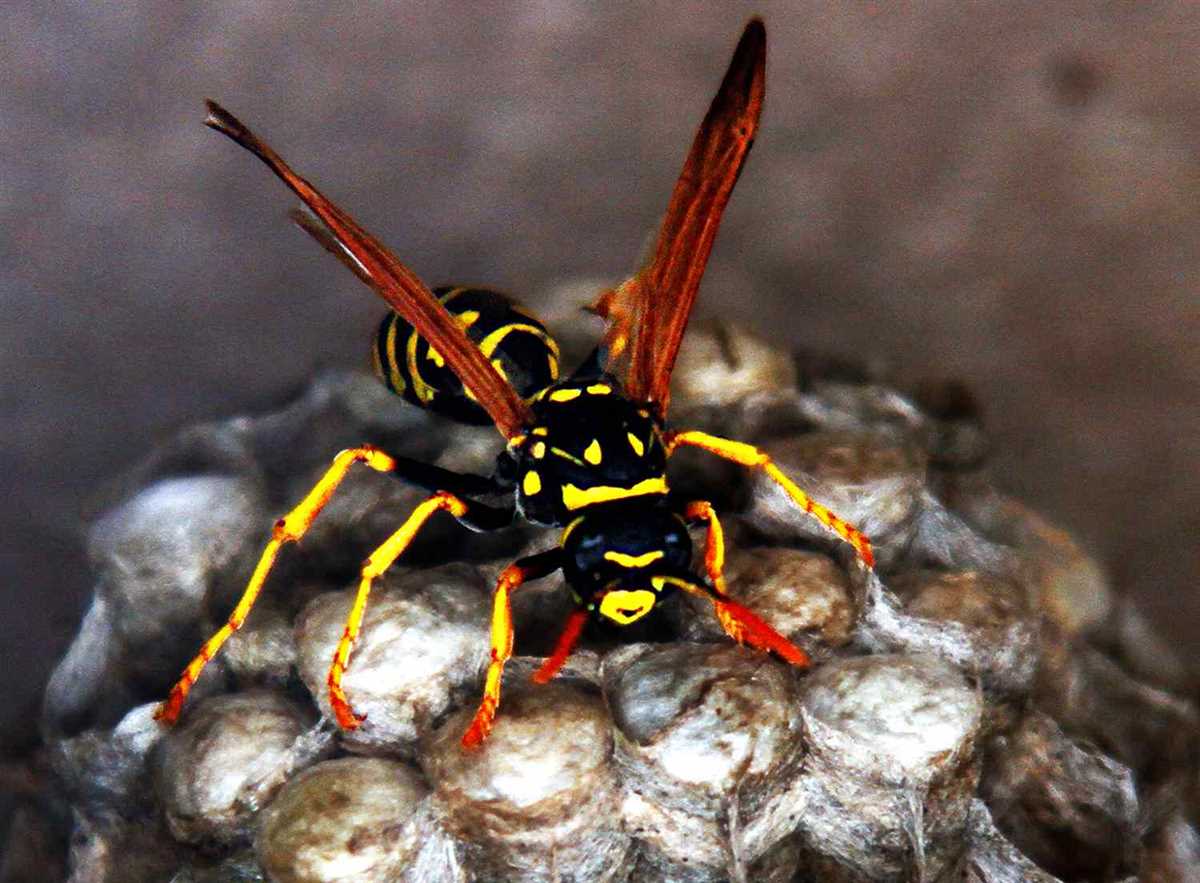
Wasp traps are an effective and safe method to catch and kill wasps. These traps use attractants to lure the wasps inside and prevent them from escaping. You can place the traps in areas where you often see wasps, such as near windows, doors, or outdoor eating areas. Regularly empty and clean the traps to ensure they remain effective.
3. Sealing Entry Points
Prevent future wasp infestations by sealing the entry points they use to enter your house. Inspect your walls, windows, doors, and other openings for any gaps or cracks that wasps can use to get inside. Use caulk, weatherstripping, or other appropriate materials to seal these openings and deny the wasps access to your home.
4. Removing Wasp Nests
If you locate a wasp nest in or around your house, it is best to contact a professional for removal. Attempting to remove the nest yourself can be dangerous, as wasps may become aggressive and sting you. A professional will know the best way to remove the nest safely and ensure that all wasps are eliminated.
5. Avoiding Sweet Scents and Bright Colors
Wasps are attracted to sweet scents and bright colors, so it is best to avoid using strongly scented perfumes, lotions, or candles when you have a wasp problem. Additionally, try to avoid wearing bright floral or patterned clothing and opt for neutral colors instead. By avoiding these attractants, you can lower the chances of attracting wasps to your home.
6. Regularly Cleaning and Removing Food Sources
Wasps are often attracted to food sources, such as leftovers, garbage, and pet food. To prevent attracting wasps to your house, make sure to clean up any food spills or leftovers promptly. Keep your garbage cans tightly sealed and away from indoor and outdoor eating areas. Additionally, avoid leaving pet food outside for extended periods. By removing these food sources, you can reduce the chances of attracting wasps.
7. Wearing Protective Clothing
If you need to be in an area where wasps are present, it is essential to wear protective clothing to avoid stings. Wear long sleeves, long pants, socks, closed-toe shoes, and gloves. Additionally, consider wearing a hat with a wide brim to protect your face. This clothing can provide a physical barrier between you and the wasps.
| Method | Description |
|---|---|
| Hiring a Professional Pest Control Service | Experts can safely and effectively remove wasps from your home. |
| Using Wasp Traps | Traps lure and catch wasps, preventing them from escaping. |
| Sealing Entry Points | Seal gaps and cracks to prevent wasps from entering your house. |
| Removing Wasp Nests | Professional removal of wasp nests to ensure safe elimination. |
| Avoiding Sweet Scents and Bright Colors | Minimize attractants by avoiding strong scents and bright colors. |
| Regularly Cleaning and Removing Food Sources | Remove food sources to reduce the chances of attracting wasps. |
| Wearing Protective Clothing | Protective clothing can prevent wasp stings while in infested areas. |
FAQ
Why are there sluggish wasps in my house?
There can be several reasons for the presence of sluggish wasps in your house. One possible reason is that they have found a food source inside your home, such as sweet drinks or fruit. Another reason could be that the wasps are dying or are already dead due to insecticide treatment. Additionally, the wasps may be suffering from a lack of food or water, which can make them more sluggish.
How can I get rid of sluggish wasps in my house?
To get rid of sluggish wasps in your house, you can start by identifying and removing any food or water sources that may be attracting them. If the wasps are still alive, you can use commercial wasp sprays or traps to capture or kill them. It is important to follow the instructions on these products carefully and to take necessary safety precautions. If the infestation is severe or you are unsure how to handle it, it is recommended to contact a professional pest control service for assistance.
Are sluggish wasps dangerous?
Sluggish wasps can still pose a risk, although they may be less aggressive than active wasps. It is important to remember that wasps can still sting, and some individuals may have allergic reactions to their venom. If you or someone in your household is allergic to wasp stings, it is crucial to take precautions and seek immediate medical attention if stung. Additionally, if you have children or pets in your home, it is important to keep them away from the wasps to prevent any accidental stings.
Can sluggish wasps infest my house?
While sluggish wasps may find their way into your house, they are unlikely to infest it in the same way that certain pests, like ants or cockroaches, would. Wasps are generally outdoor insects, and their presence inside a house is usually temporary. If you notice a large number of sluggish wasps in your home, it is important to identify and address any factors that may be attracting them, such as food or water sources, to prevent further infestation or potential nesting.
How long do sluggish wasps live?
The lifespan of a wasp varies depending on the species, environmental conditions, and individual health. Generally, worker wasps live for a few weeks, while the queens can live for several months. However, if a wasp has found its way inside your house and is exhibiting sluggish behavior, it may be nearing the end of its natural lifespan. Dead or dying wasps are usually less of a concern, but it is still important to take appropriate measures to remove them from your home.
Can sluggish wasps harm my garden?
Sluggish wasps are not likely to cause significant harm to your garden. While they may feed on fruits or nectar, their presence in small numbers is generally not a cause for concern. However, if you notice a large number of wasps in your garden or if they are exhibiting aggressive behavior, it is advisable to monitor the situation closely and take appropriate measures, such as removing attractants or contacting a professional pest control service, if necessary.











